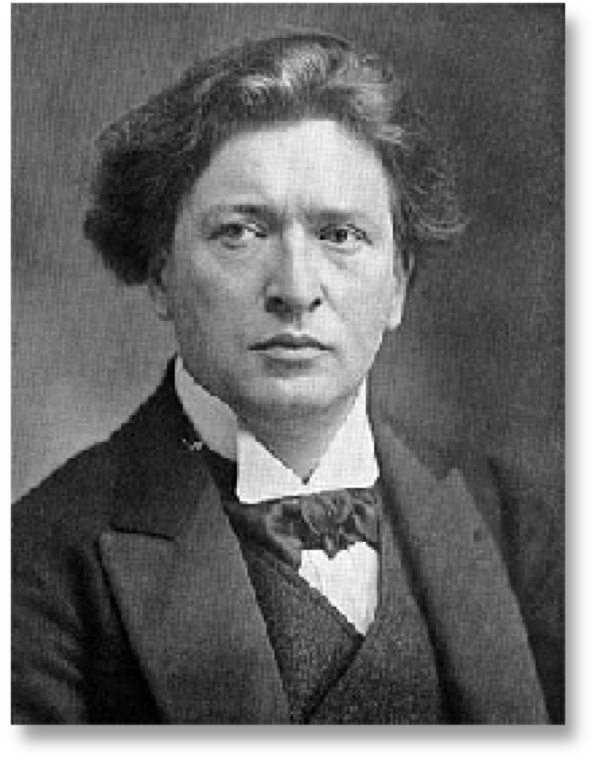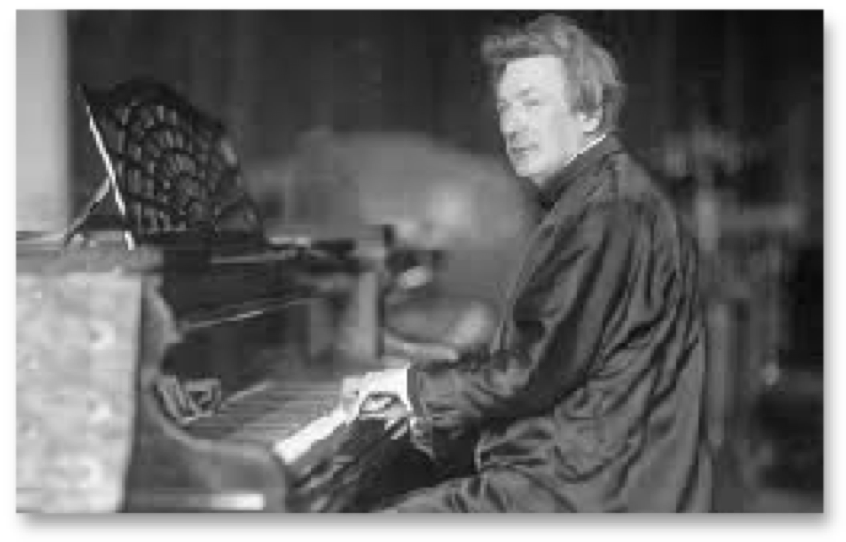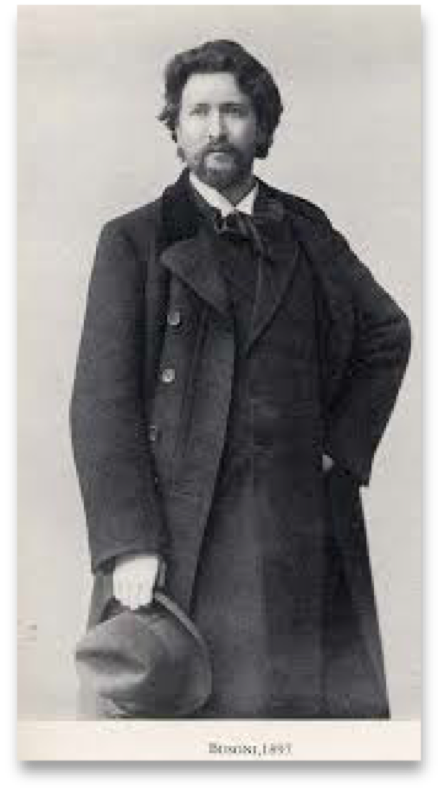
Ferruccio Busoni 1 april 1866 – 27 juli 1924
Ferruccio Busoni Masterpianist and composer and his playing technique (article Geoffrey Madge)
If any musician is a rewarding subject for discussion or even controversy, Ferruccio Busoni (1866-1924) fits the bill nicely. When writing a short article about Busoni, it is hard to decide what is the most fascinating aspect of his life.
Is it the pianist, the composer, the teacher, the essayist, the thinker or the transcriber?
All are important for a good understanding of his musical philosophy. I shall limit myself here to the first three aspects: the pianist, composer and teacher. I will discuss several ideas behind Busoni's piano playing as well as his thoughts on interpretation, which are still relevant today and useful for students and professionals alike. I have performed Busoni's piano music for more than fifty years. Some of my conclusions are derived from various sources who were involved with or influenced by Busoni.
Ever since he died in 1924 his piano playing has been considered to be comparable to that of Franz Liszt, the most extraordinary keyboard virtuoso the world has ever known.
Busoni's piano playing was in many ways a continuation of the school of Franz Liszt. The influence of Liszt became even stronger after Busoni turned 30.
The Busoni technique
According to his English student Ursula Creighton, Busoni did not, in fact, teach technique. What he did was to reveal to the student the line of musical interest in a composition from its beginning to the end. A piece had to be convincing with a logical emotional line. This was one of the main characteristics of his own piano playing.
There are a number of important points that need to be clarified concerning the above.
Playing staccato while sounding legato: what we hear is not always the way it has been played. Busoni believed that legato was an illusion. This doesn't mean that he did not play legato. On the contrary, he was noted for his legato sound. The illusion of legato can best be heard when a group of notes are played so that they are extremely
equal in length. It is perfectly possible, when playing short notes of equal lengths, to sound legato even when the technique is non legato. A pre-determined amount of non legato or staccato measures, when well played, can give the illusion of legato when listening at a distance in a large hall. The method of playing may be different from what we hear. For a parallel example from a different angle, we may appear to play smoothly and calmly, yet still sound restless or agitated.
His technical approach
Throughout his lifetime, Busoni gave several clues as to his keyboard thinking, for instance: "I don't swing the fingers." "I don't use the hand." (Kosnick 1971).
I think that these two groups of five words are the important foundation supporting Busoni's instrumental technique. What do they imply?
According to Egon Petri, Busoni often said: "you must play deeply into the keys." These principles of staccato/non legato and playing deeply were basic concepts for Busoni's own playing. This can suggest several things, for example that the finger top is played slightly inwards towards the palm, creating a grasping or
scraping (a horrible word) of the notes.
Another implication that I discovered when preparing my recording of his solo piano works was the possibility to retain a light continuous forward pressure from the arms to the keyboard. The fingers feel then as if a light forward pressure is transmitted to each key. This applies to both softer and louder passages. The keys
needed to be played deeply, as Egon Petri mentioned. Busoni hardly moved his torso while performing; if anything, mainly his fingers were active. He took each note with an inward scraping motion of the finger, played from the knuckle.
Orchestration at the piano
Busoni was a master orchestrator, as can be seen by the numerous transcriptions he made. To achieve this variety of orchestration, he often made use of pre-fixed hand and finger positions. The hand was nearly always in a pronated position with the hands pointing outwards. The upper arms generally held quite close to the body and the arm, through to the fingertips, as one totally fixed unit.
The rebound
Another important concept to consider is his use of the rebound of the playing finger's key in creating the energy for each next playing finger. When one finger goes down, the following rises quickly as a rebound, rebounding upwards as a reaction to the downwards playing finger, the return journey to the key being slower than the rebound upwards.
He allowed the fingers to rebound with the key, and he often allowed the fingers to retake a key halfway, creating an "after resonance" and catching this in the pedal.
The great English pianist Harriet Cohen mentions in her book Music's Handmaid that Busoni asked her to use a 'squirming' finger; implying that the finger would then remain 'alive' on the note after being played. As a
result, this changed the position of the hammer, and this movement of the hammer would in turn change the sound of that note.
Hand and body positions/fingering
Busoni's hands were pointing outwards. You can see this very often in the positions of the chords in his compositions, especially in the later works.
On the day of a concert he would play his whole program through, slowly and very softly, without expression, using only the fingers.
Busoni had unique ideas on fingering. He often used the same finger for melodies, usually the third and the thumb: see the Carmen Fantasy (D Flat section) for instance. Using one finger helps us to realize and hear the distances between intervals. These days we often do not hear real intervals. When using only one finger, they come back to life. This is a good way to practice melodic lines.
Busoni and the pedals
One of his specialties was his use of the three pedals in relatively equal amounts. A favorite Busoni quote was: "Not using the pedal is often its best use." He would use the sustaining pedal for one section, then no pedal for the next (a sort of terracing with the pedal).
Not putting the heel on the floor when pedaling made it much easier to use vibrato pedal. Additionally, using a pedal vibrato with half- and quarter-deep pedaling with the dampers remaining closer to the strings.
And his speciality: the use of the third pedal in combination with the una corda pedal, the left foot on both pedals at the same time.
Making pictures, not just notes.
Busoni was already making pictures in his earliest works, which we can see in the early Macchiette medioevali, Opus 33a, the Racconti Fantastici and the 3 Pezzi caratteristici, Opus 12.
As a young boy he was fascinated with the lives of the knights and troubadours, all characters with a bold imagination, and applied this fascination to the making of musical pictures. The works mentioned above are all excellent study material for young pianists, melodious and intriguing to play.
Several years later he wrote an incredible series of 24 Preludes. It has always surprised me that they are hardly, if ever, played in concerts. Not only is their musical content superb, but the incredible virtuosity needed for a successful performance is equal to none. They show the technical superiority that Busoni possessed at a very early age.
His practical use of all three pedals certainly would have helped him in making his fascinating colors. This pictorial illusion is helped even more in his later years by his use of the left foot for the una corda and the third pedal together, important for the spooky, occult, mysterious sort of sound necessary for the performance
of his later pieces.
Surrounding passage work was played as an ornamental background to the main harmonies and themes. Another feature mentioned by the contemporaries of both Busoni and later Liszt: by bringing out the most important melodic idea behind each line, the melos, their playing never seemed bombastic or screamingly loud in fast passages. One could easily imagine that the end result would be a "sound picture."
Many commentators on Busoni the pianist mentioned that he had a whispering sound, un-earthlike, similar to the sound of an aeolian harp.….
He once experimented while performing Beethoven's Emperor Concerto with a very low dynamic. "to see how it would work" (Include reference). His aim was to avoid anything that would sound pompous in his interpretation.
Just a few ideas from the Busoni school of piano playing. A school of playing that still today needs a revival.
For examples and further reference see my article in the booklet of my 6 CD Busoni box that was issued by Philips in 1985.
Geoffrey Madge
Artikel al eerder verschenen in de EPTA.


Redactie e-mailadres:
info@pianovrienden.nl
Pianovrienden | 2025